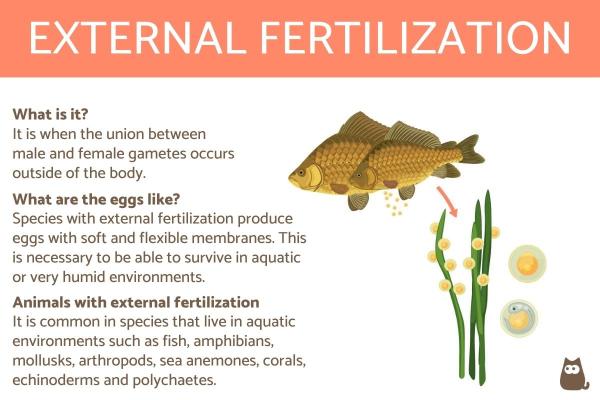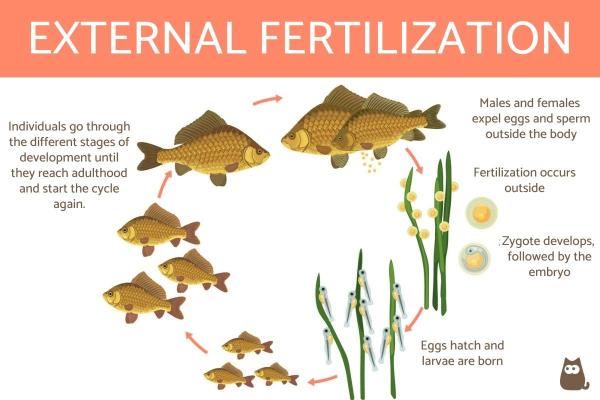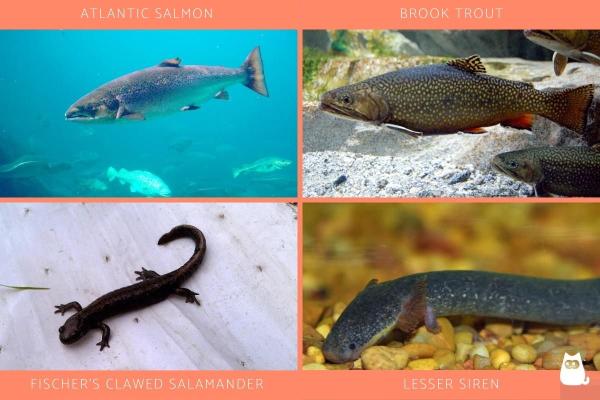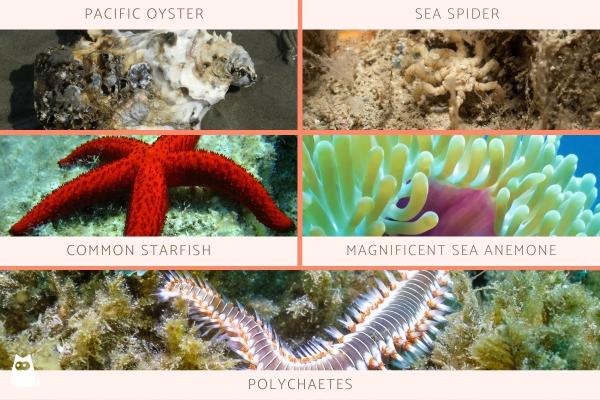External Fertilization in Animals


Reproduction is a fundamental process for all animal species on our planet. Without it, there wouldn't be any animals left to populate it. Reproduction has to adapt to each specific animal for it take place correctly. This is due to various factors, including individual morphology and external environment. The result is various forms of reproduction with their own characteristics and adaptations.
Sexual reproduction is the most common form of reproduction in multicellular eukaryotes. This process requires fertilization, something which can take many forms. Generally speaking, we find either internal or external fertilization in animals. AnimalWised shares our guide to external fertilization in animals. We explain what this involves and provide examples from the animal kingdom.
internal vs external fertilization
What is external fertilization in animals?
Fertilization is the union between the female and male gamete, also known as the ovum and sperm, respectively From this union, the zygote forms and eventually develops into an embryo. This process of fusion between both sex cells can occur inside or outside of the animal's body. This is the defining difference between internal vs. external fertilization.
External fertilization is the process of union of the gametes outside the body of the female. This means it occurs somewhere in the environment where males and females live. The conditions of this environment where external fertilization takes place must be appropriate, otherwise the process would be limited or prevented.
Internal vs. external fertilization
In terms sexual reproduction, some animals are oviparous, i.e. those that lay eggs outside of the body. Many different animal species are oviparous, some of which perform internal fertilization (e.g. birds) and others external fertilization (e.g. fish). These are good examples of the differences between internal and external fertilization as the eggs of each species are adapted according to the process. For example:
- Oviparous species with internal fertilization: these species have hard eggs, with covers or shells resistant to desiccation. This allows them to remain outside of water.
- Oviparous animals with external fertilization: these species produce eggs without this protection, having thinner membranes. They generally require an aquatic or a humid environment for their development.
The main difference between internal vs. external fertilization in oviparous animals is whether it takes place internally or externally. These different types of egg covering are a necessary result of this difference. Since the eggs are laid outside the body, they need to be protected somehow.
In this way, internal fertilization is more common in terrestrial animals to protect the embryos and prevent predation by other animals. External fertilization more commonly takes places in aquatic animals since the water helps to guide the sperm when outside of the body. There are exceptions to both.
Learn more about how eggs are fertilized with our article on whether sharks lay eggs.

External fertilization in vertebrates
Although internal fertilization is common in many vertebrates, there are also various species of vertebrates which carry out external fertilization. These examples can mostly be found in certain species of fish and amphibians We provide some examples of vertebrates with external fertilization:
Fish with external fertilization
Fish are aquatic animals that inhabit both freshwater and saltwater environments. They are a diverse group from both a taxonomic point of view, as well as in terms of the characteristics they present. In respect to fertilization, several species carry out the fertilization process externally. This can often be quite a feat due to the many factors which can make it difficult.
The aquatic environment itself can cause both the egg and the sperm to disperse before being fertilized. The gametes are very short lived, so fertilization must occur as soon as possible. The tiny sperm has a limited range to reach the female gamete. Various species also feed on the eggs released by females. Despite these obstacles, the life of this group of animals continues as some manage to reproduce effectively.
To best ensure successful reproduction, aquatic species with external fertilization are able to carry out something known as a chemotaxis. This is the movement of an entity in response to chemical stimulus. In this case, chemicals released by the ova attract male gametes. These compounds are specific to each species. It is also common for spawning to be large in number to increase the chances of successful fertilization.
Among the fish that have external fertilization we can find:
- European perch (Perca fluviatilis)
- Atlantic salmon (Salmo salar)
- Atlantic cod (Gadus morhua)
- Brook trout (Salvelinus fontinalis)
- Pink salmon (Oncorhynchus gorbuscha)
Amphibians with external fertilization
Within the group of amphibian animals, there are several examples of animals with external fertilization. However, it is not an absolute rule as there are also species of this type that carry out internal fertilization.
Among the amphibian species with external fertilization we can find:
- Common toad (Bufo bufo)
- Lesser siren (Siren intermedia)
- Common frog (Rana temporaria)
- Chinese giant salamander (Andrias davidianus)
- Fischer's clawed salamander (Onychodactylus fischeri)

External fertilization in invertebrates
We can also find various groups of invertebrate animals that reproduce via external fertilization. In fact, it is quite common in these types of animal, especially in aquatic environments. Some animals are sessile (unable to move on their own). While they may require certain variations to this process, the essential elements are the same. The animals release gametes in the water for fertilization to occur and the embryos to later develop.
Invertebrate species with external fertilization are also subject to environmental influences. These can limit or prevent the process from occurring, but in many cases they also manage to overcome them and successfully reproduce. Examples of invertebrates with external fertilization are:
Mollusks
It is common for species of aquatic mollusks to have external fertilization and some of the most representative examples include:
- Hard clam (Mercenaria mercenaria)
- Pacific oyster (Magallana gigas)
- Common tusk shell (Antalis vulgaris)
Echinoderms
In the case of echinoderms that are fertilized outside the female's body, we can mention the following examples:
- Common starfish (Asterias rubens)
- Fire urchin (Astropyga radiata)
- Donkey dung sea cucumber (Holothuria mexicana)
Arthropods
Within the group of marine arthropods we find certain examples of this type of fertilization, among which we highlight:
- Sea spider (Pycnogonum littorale)
- American horseshoe crab (Limulus polyphemus)
Sea anemones and corals
In this group of animals with exclusively aquatic habits, external fertilization is common, so we can mention:
- Magnificent sea anemone (Heteractis magnifica)
- Knobby brain coral (Pseudodiploria clivosa)
- Elkhorn coral (Acropora palmata)
Polychaetes
Polychaetes are segmented worms of the Annelid phylum. They correspond to the most diverse class of polychaetes, the majority being in the marine environment. The entire group fertilizes externally.

Why do most aquatic animals carry out external fertilization?
Through their evolutionary and adaptation processes, animals develop different mechanisms or strategies that are beneficial for their survival. The aquatic environment offers a possibility of mobilizing the gametes for fertilization to occur, something that does not happen in the terrestrial environment. This makes fertilization possible in the water without the animals having to touch each other.
After the fusion between ova and spermatozoa, the aquatic environment also offers another possible advantage. Specifically, the possibility of dispersal of the newly formed zygote. As we have already mentioned, these animals release large quantities of eggs into the water in such a way that the survival of the species is guaranteed both by the quantity and by the dispersion offered by the water. Simply put, external fertilization is often the most effective way for the animal to reproduce in the aquatic environment.
Not all aquatic animals reproduce externally. You can see examples in our guide to aquatic mammals.
If you want to read similar articles to External Fertilization in Animals, we recommend you visit our Facts about the animal kingdom category.
- Animal Diversity Web (2020). Retrieved from: https://animaldiversity.org/
- Hickman, C., Roberts, L., & Parson, A. (2000). Comprehensive Principles of Zoology. McGraw Hill Inter-American: Spain.
- IUCN. (2022). The IUCN Red List of Threatened Species. Version 2021-3. Retrieved from: https://www.iucnredlist.org








